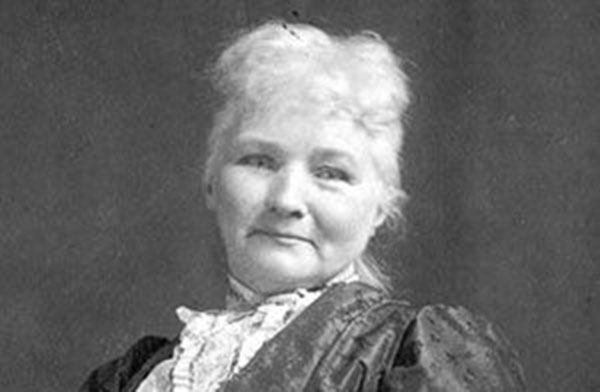Mother Jones was an Irish immigrant with a heart of gold for the working class and a ferocious commitment to reforms in the mining industry.
Born on August 1, 1837 in Cork Ireland, Mary Harris Jones would become one of the most recognized female labor and working class advocates of the early 1900’s. She was the daughter of a tenant farmer, Richard Harris, and in her teens emigrated to Canada where she received her Catholic education in Toronto. After her family’s move to the United States, Mary Harris became a teacher and taught in a Michigan convent. Weary of her life as an educator, her restless nature took her to Chicago, Illinois.
Mary Harris Jones, Business Woman of the 1860’s
Mary Harris met her husband when she left Chicago for Memphis, Tennessee. She married George Jones, an Iron Workers Union member, in 1861 with whom she would have four children. Her interest in business arose when she became the owner of a Memphis dress shop. During an 1867 outbreak of yellow fever, Mary’s four young children and her husband succumbed to the dreaded disease. This would be the first of two major events that shaped her future as Mother Jones.
The Great Chicago Fire
The second major event in the life of Mary Harris Jones took place when she moved back to Chicago in an attempt to rebuild her life. She opened a second dress shop owing to her dressmaking skills. In 1871, the Great Chicago Fire claimed her shop, her home and her possessions. This propelled Jones into a greater focus on the labor movements that were on the rise. She decided to join the Knights of Labor, one of America’s largest organized labor groups established in 1869. When the Knights of Labor collapsed as a result of the Haymarket Riot of 1887, Mary joined the United Mine Workers union.
The Avenging Angel Of Coal Miners
Although she was involved in socialist causes, Mary Harris Jones was not a suffragette. In fact, she did not support the suffragette movement. Unafraid to speak out for the causes of the miners, she used whatever dramatic mechanisms were at her disposal to focus attention on the unspeakable horrors of the lives of mine workers and their families: 18 hour work days, pay so low it forced them to owe mine owners for the barest essentials sold at the mining company’s store and shacks built near to the mines that caused disease for miners and their families.
The Anthracite Coal Strike
During the presidency of Theodore Roosevelt, a coal strike took place in Pennsylvania in 1902. The organizer of the strike was union president, John Mitchell, of the United Mine Workers union. The membership of the United Mine Workers by this time was over 100,000. As the strike dragged on for months, Roosevelt sent in troops to the mines. The solidarity among the miners for better wages and living conditions and an 8-hour day remained resolute.
Mary Harris Jones was among those who fought for the children who had been maimed working in the mines in order to produce higher quantities of ore. She fought side-by-side with the miners and their wives and children while mine owners used their financial resources to influence the government against the laborers. Mining strikes spread from Telluride to Cripple Creek until militia and the military were brought in to disperse striking mine workers.
Mother Jones At Westmoreland, Colorado
When the strike began at Westmoreland in Colorado, Mother Jones encouraged miners’ wives to bring their children to the mines. The women were told by a judge they would be fined for disturbing the peace. Mother Jones insisted the women refuse to pay the fines and take their children to jail with them. At the jail, she and the women sang all night until the townspeople complained and they were released. She was arrested at Trinidad when a strike broke out there. She was taken to a hospital turned prison where she was guarded by three military men. She remained there for 9 weeks without due process of the law. Mother Jones, as she was affectionately known was never afraid to speak out, speak up or stand for the rights of the working class.
References:
- Colliers Encyclopedia, “America Enters The World,” Vol. VII, Author Page Smith
- Reviewing American History, Author Irving L. Gordon








